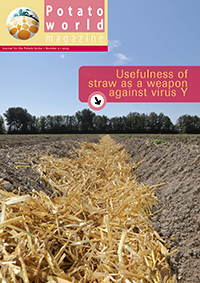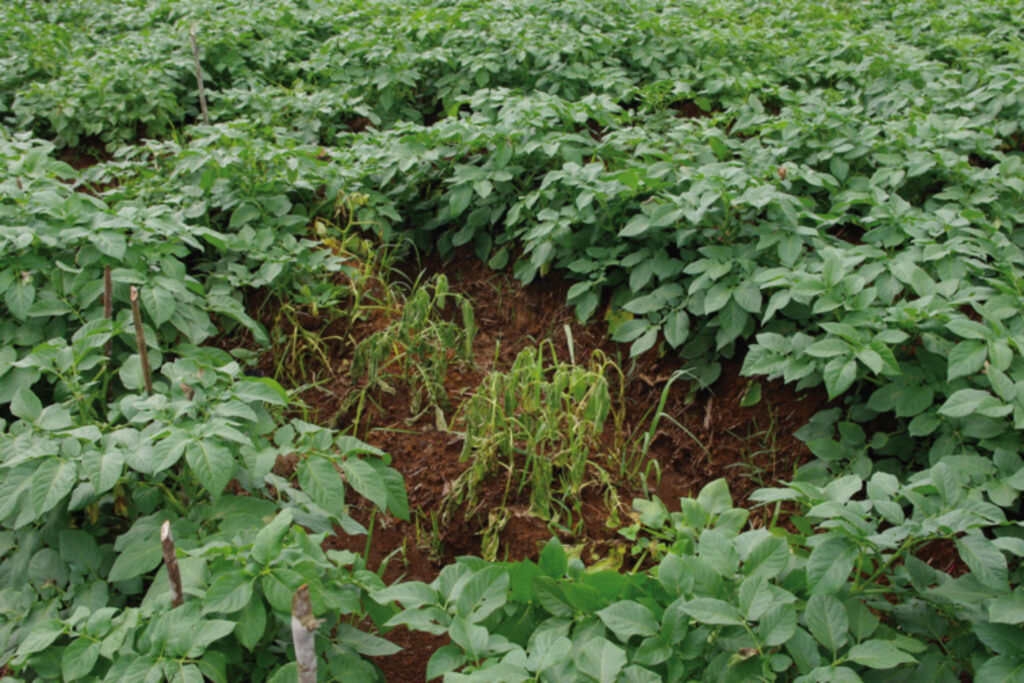Already a subscriber? Activate your premium account

Potatoworld Magazine

Recently I needed to calculate the losses in global potato production due to late blight caused by the oomycete Phytophthora infestans. I reviewed many articles that reported estimates of losses due to this disease in crops e.g. between 6 and 40 % in Romania, 23 % in Poland, up to 40 % in Burundi, 38-65 % in India, 5 to 60 % in China, 23 – 81 % in Kenya and so on.
I reckoned that average losses in the part of the world that has not access to adequate management strategies could safely be set at 35 %. FAO statistics show that in these countries potato production currently is 225 million tons per year which without losses – worth 79 million tons – could have been over 300 million tons. The 79 million tons lost, at a farm gate price of € 100 per ton represent a value of € 7.9 billion. In regions with adequate control production is estimated at 150 million ton per year. Here losses are the costs of control, about 10% of the production costs representing 15 million tons at € 100 per ton valued at € 1.5 billion. Total losses due to this disease thus calculated are € 9.4 billion (or well over 10 billion USD). Much can be said about this approach but it still strongly underestimates the real losses when taken the hidden ones into account as well. Growers in tropical and subtropical highlands with rainfed agriculture such as in e.g. Rwanda, Kenya, Ethiopia, Myanmar, Indonesia and Colombia farmers avoid to have a full grown crop at the peak of the rain by planting in the middle of the rainy season so the crop has enough water at emergence and grows in intermitting rainfall and suffers from drought towards harvest. Growers balance the risks of blight against that of drought but the losses due to drought stem from late blight avoidance.

A similar calculation could be made but there are much fewer sources for the globally second of importance potato disease: brownrot caused by the bacterium Ralstonia solani. The disease is prevalent in the same moist tropical highlands mentioned before. The foliar symptoms – see photograph taken in Indonesia – are similar to bacterial wilt caused by blackleg and soft rot bacteria in temperate climates: the plants first wilt and then die. The tubers rot within the vascular ring and ooze at the eyes. Like blackleg in temperate climates the disease spreads from plant to plant with water and from season to season with infected seed tubers. Warmer conditions worsen the symptoms reason why growers do not go further downhill with potato. Where drought is a hidden cost of late blight, high temperatures at lower altitudes are hidden costs of brownrot and more potatoes would be produced in developing countries were the disease less prevalent under warm conditions. When I worked on potato in the early 1980ies in central Africa brownrot was (still is) the main tuber borne disease. There was not much difference in susceptibility among varieties but in Madagascar an old Dutch variety Sientje was said to have over average tolerance and in Rwanda and surroundings the variety Cruza 148 introduced by CIP really performed better and now is the most important variety in Burundi where it is named Ndinamagara. Real resistance or immunity such as can be established with late blight where R genes exist is not readily available, just differences in tolerance. Lilliam Gutarra and colleagues recently published a paper in the American Journal of Potato Research (Vol 92, 258-265) where they reported variation of resistance to different strains of R. solani in highland tropics adapted potato genotypes. They evaluated ten genotypes (clones in a breeding program, not given a name yet) that CIP selected in its breeding program for brownrot tolerance. For me interesting to notice that Cruza 148 (Ndinamagara) was a parent of one of the ten clones. The most tolerant clone (394895.7, apparently the cross was made by CIP’s breeding department (3) in 1994 (94) when it was the 895th cross and clone number 7) was selected as the most tolerant one. And substantially so!. Good to notice that research on this disease continues but compared with R&D on late blight it is only an ‘orphan’ disease. This because in resource rich temperate climate countries brownrot is a quarantine disease and seed tubers are extensively tested for its absence making breeding for resistance redundant. ●
Events
©2015 - 2024 Potatoworld | Webdesign and realisation COMMPRO